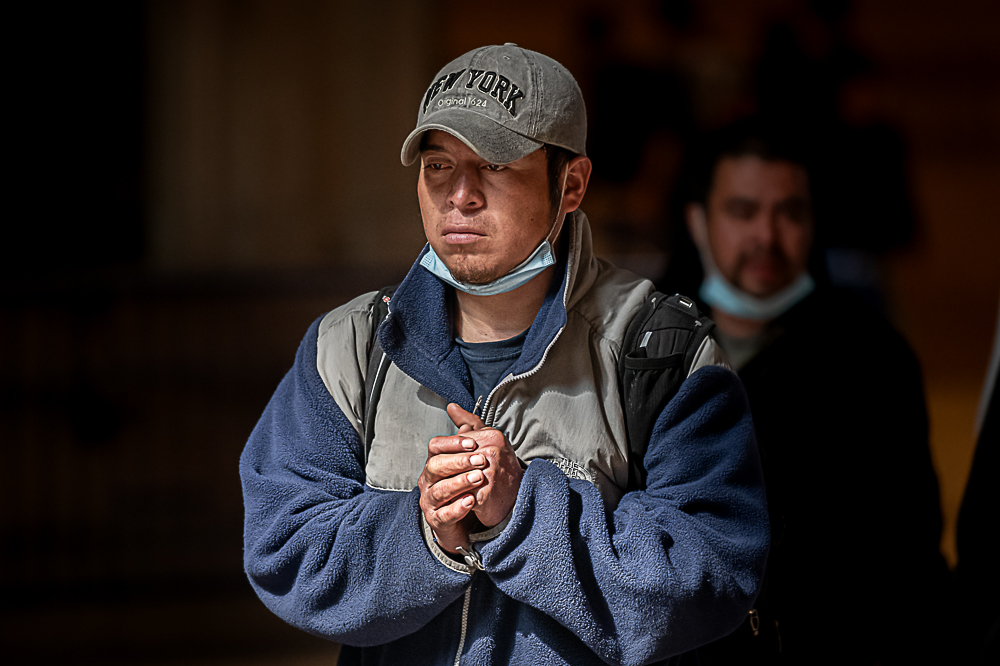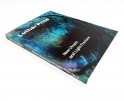Ned Walthall: Grand Central Terminal After
A few weeks ago, I spent many days jurying the Light Exhibition for the A. Smith Gallery. I was immediately taken by a series of images created by Ned Walthall that spoke to this moment in time: New York faces spotlighted by a shaft of light and covered in covid masks. The pained, tired, and exhausted expressions are a truthful telling of life during the pandemic. Research has discovered the impact of covid on our psychological well-being will likely result in post-traumatic stress disorder, anxiety, depression, and other symptoms of distress. His singular tableaux of New Yorkers in Grand Central Terminal reflect these emotions, even when covered by a piece of cloth.
Ned Walthall is a photographer based in Lawrenceville, New Jersey. He received his MFA from the Institute of Art and Design at New England College (formerly the New Hampshire Institute of Art). He has shown work at The Arlington Museum of Art in Arlington, Texas; The Barrett Art Center in Poughkeepsie, New York; Gallery 14 in Hopewell, New Jersey; The Glasgow Photography Center in Glasgow, Scotland; The Midwestern Center for Photography in Wichita, Kansas; the New England School of Photography in Boston; and the Southeast Center for Photography in Greenville, South Carolina.
He and his partner, Mari Pearlman, are currently at work on a photo book entitled Covid & Faith, in which they explore in some depth the ways in which the COVID-19 pandemic has transformed individuals’ spiritual practice and beliefs.
Follow Ned Walthall on instagram: @walthallphotography
Grand Central Terminal After
Prior to the pandemic, my work was preponderantly about faces. I spent a couple of years photographing strangers in Grand Central Terminal in New York. I envisioned that work as a kind of street photography, at least in terms of how it was created, but thanks to the light in Grand Central, it did not look like street photography. There is a simple kind of heroic beauty in people getting up, putting on their clothes, boarding a train, and ratcheting up enough courage to walk across the immensely public space of the main concourse at Grand Central, allowing themselves to be seen, allowing themselves to see others as they might want to be seen, in what on a good day can be one of the greatest cities in the world and on a bad one, among the meanest.
And then came the pandemic and the absence of faces, first by way of the isolation that inevitably accompanied lockdowns, which was, of course, bad enough. And then, with vaccines making it safe to do work again as a street photographer, by way of needing to cover our faces with masks. This most public part of ourselves, which in this culture, prior to the pandemic, we rarely cover, was no longer visible, no longer available to be photographed, at least not in those interior public spaces flooded with faces, each stamped with the unique wants, needs, hopes, dreams, aspirations of the human who owned it.
And suddenly, my work became not about the presence of faces but their absence. I am reminded of John Berger’s famous assertion that “a photograph, whilst recording what has been seen, always and by its nature refers to what is not seen.” My photographs are now about the faces we can’t see and all that that implies about the tenuous ground on which we walk and the fragile lives that we lead.
Posts on Lenscratch may not be reproduced without the permission of the Lenscratch staff and the photographer.
Recommended
-
Earth Month Photographers on Photographers: Tyler Green in Conversation with Megan JacobsApril 15th, 2024
-
Luther Price: New Utopia and Light Fracture Presented by VSW PressApril 7th, 2024
-
Emilio Rojas: On Gloria Anzaldúa’s Borderlands: The New MestizaMarch 30th, 2024
-
Artists of Türkiye: Cansu YildiranMarch 29th, 2024
-
Artists of Türkiye: Sirkhane DarkroomMarch 26th, 2024













































































